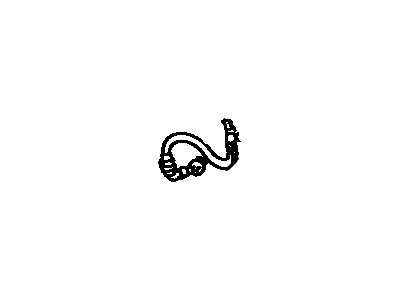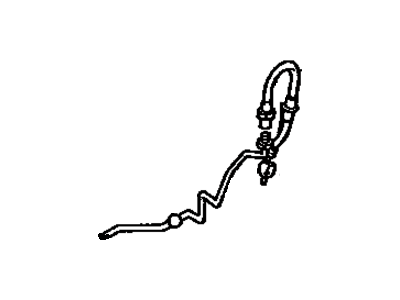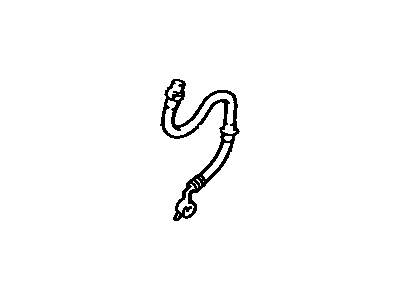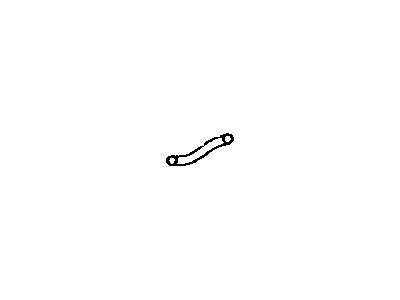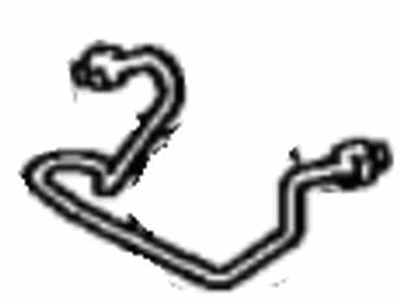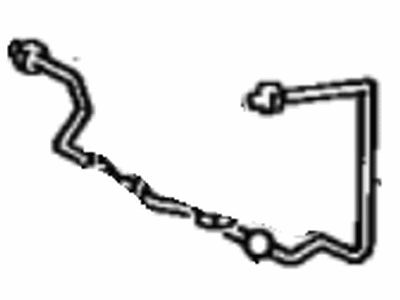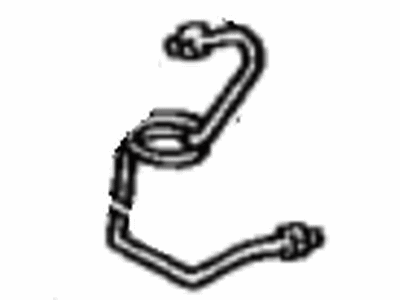

My Garage
My Account
Cart
Genuine Toyota MR2 Brake Line
Brake Hose- Select Vehicle by Model
- Select Vehicle by VIN
Select Vehicle by Model
orMake
Model
Year
Select Vehicle by VIN
For the most accurate results, select vehicle by your VIN (Vehicle Identification Number).
31 Brake Lines found
Toyota MR2 Flexible Hose
Part Number: 90947-02609$62.58 MSRP: $88.21You Save: $25.63 (30%)Ships in 1-3 Business DaysToyota MR2 Flexible Hose
Part Number: 90947-02552$94.07 MSRP: $132.60You Save: $38.53 (30%)Ships in 1-3 Business DaysToyota MR2 Flexible Hose
Part Number: 90947-02499$75.19 MSRP: $105.99You Save: $30.80 (30%)Ships in 1-3 Business DaysToyota MR2 Flexible Hose
Part Number: 90947-02459$73.30 MSRP: $103.32You Save: $30.02 (30%)Ships in 1-3 Business DaysToyota MR2 Flexible Hose
Part Number: 90947-02554$75.19 MSRP: $105.99You Save: $30.80 (30%)Ships in 1-3 Business DaysToyota MR2 Flexible Hose
Part Number: 90947-02610$80.46 MSRP: $113.42You Save: $32.96 (30%)Ships in 1-3 Business DaysToyota MR2 Flexible Hose
Part Number: 90947-02692$80.45 MSRP: $113.41You Save: $32.96 (30%)Ships in 1-3 Business DaysToyota MR2 Flexible Hose
Part Number: 90947-02693$80.46 MSRP: $113.42You Save: $32.96 (30%)Ships in 1-3 Business DaysToyota MR2 Flexible Hose
Part Number: 90947-02791$80.45 MSRP: $113.41You Save: $32.96 (30%)Ships in 1-3 Business DaysToyota MR2 Flexible Hose
Part Number: 90947-02460$94.07 MSRP: $132.60You Save: $38.53 (30%)Ships in 1-3 Business Days
| Page 1 of 2 |Next >
1-20 of 31 Results
Toyota MR2 Brake Line
If you are in demand for superior quality and affordable OEM Toyota MR2 Brake Line, then shop with us! We own a wide range of the reduced-priced genuine Toyota MR2 Brake Line. You can purchase in confidence as all parts come with a manufacturer's warranty. Any issues with our products? No need to worry as we have a hassle-free return policy to guide you every step of the way.
Toyota MR2 Brake Line Parts Questions & Experts Answers
- Q: How to inspect and replace flexible and metal brake lines on Toyota MR2?A:About every six months, with the vehicle raised and securely placed on jackstands, inspect the flexible hoses connecting the steel brake lines to the front and rear brake assemblies for cracks, chafing, leaks, blisters, and other damage, as these are crucial parts of the brake system. Use a light and mirror for a thorough check, and replace any hose showing signs of wear. To replace a flexible (rubber) hose, clean dirt from the ends, hold the nut on the flexible hose steady while loosening the other union nut to remove the hose and washer, soaking connections with penetrating oil if necessary. Installation involves reversing the removal process, ensuring all securing brackets are in good condition and lock nuts are tight, and installing a new hose clip. Check that suspension or steering components do not contact the hose, having an assistant push on the vehicle and turn the steering wheel lock-to-lock during inspection, then bleed the brake system. When replacing metal brake lines, ensure proper replacements are purchased, avoiding copper pipe for any connections. Prefabricated brake lines with flared tube ends and installed connectors are available at auto parts stores, or obtain recommended steel tubing and fittings if prefabricated lengths are unavailable. Measure the old brake line to determine the correct length, allowing about 1/2-inch extra for flaring the ends, then install the fitting onto the cut tubing and flare the ends with an ISO flaring tool. If necessary, carefully bend the line to the proper shape using a tube bender, avoiding crimping or damaging the line. Ensure the new line is well supported in the brackets with ample clearance from moving or hot components, check the master cylinder fluid level, add fluid as needed, bleed the brake system, and test the brakes carefully before returning the vehicle to normal operation.
